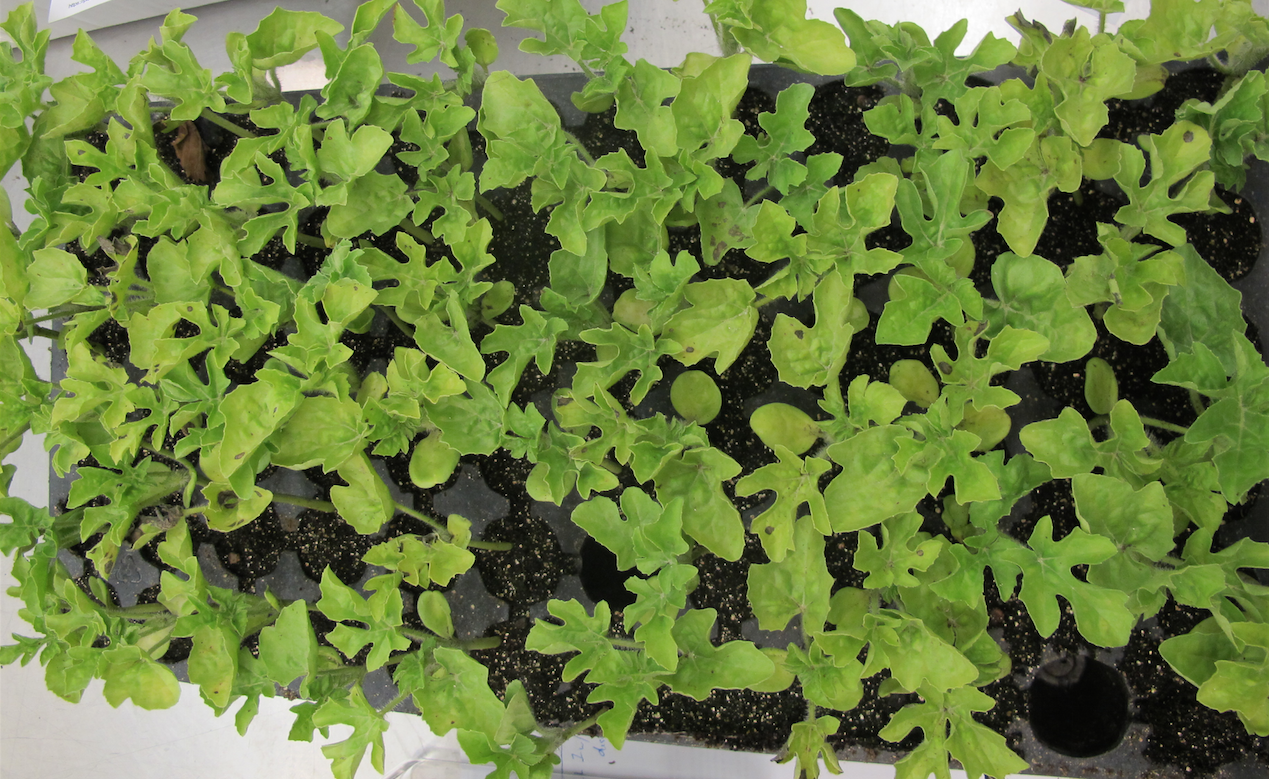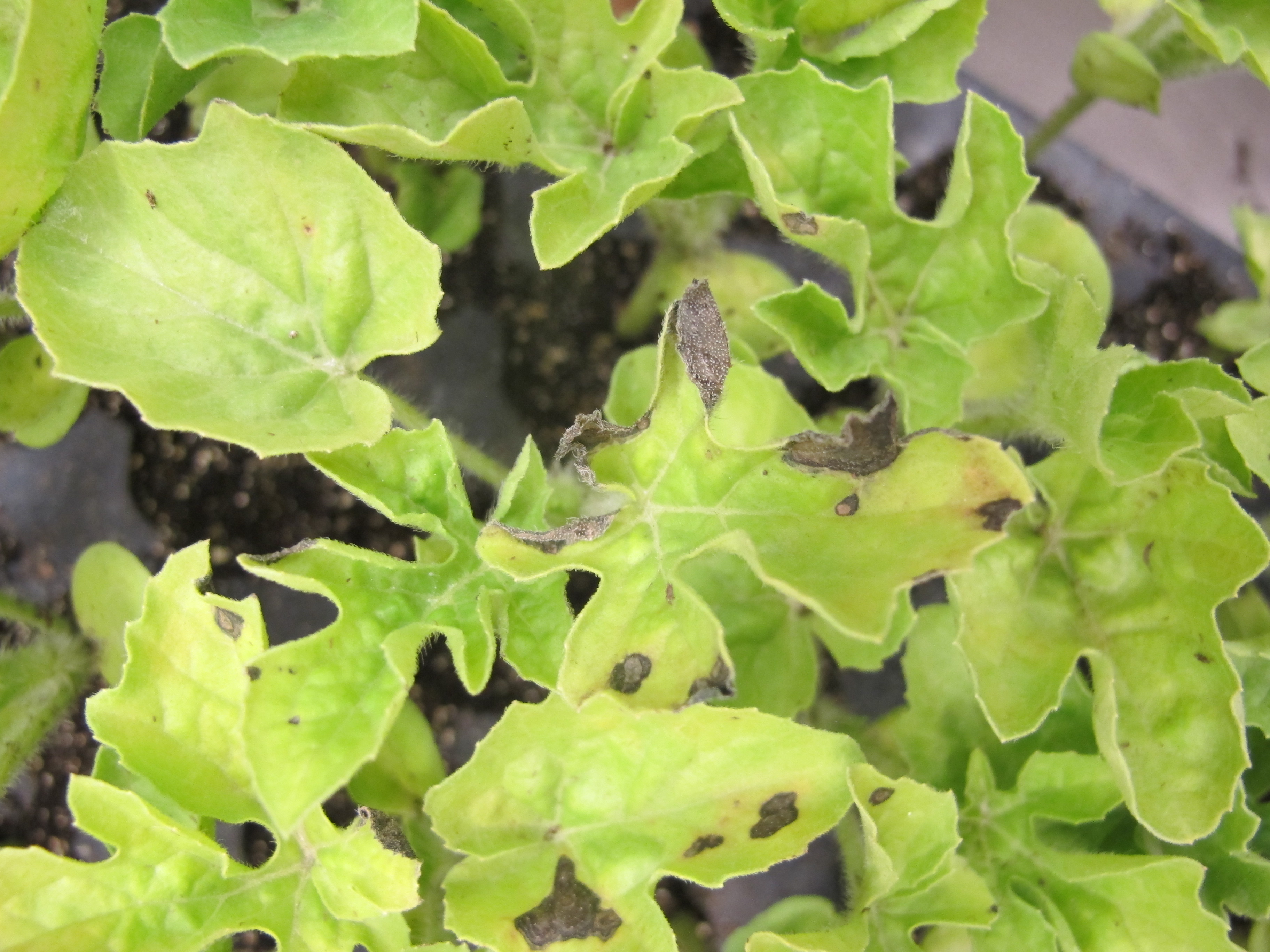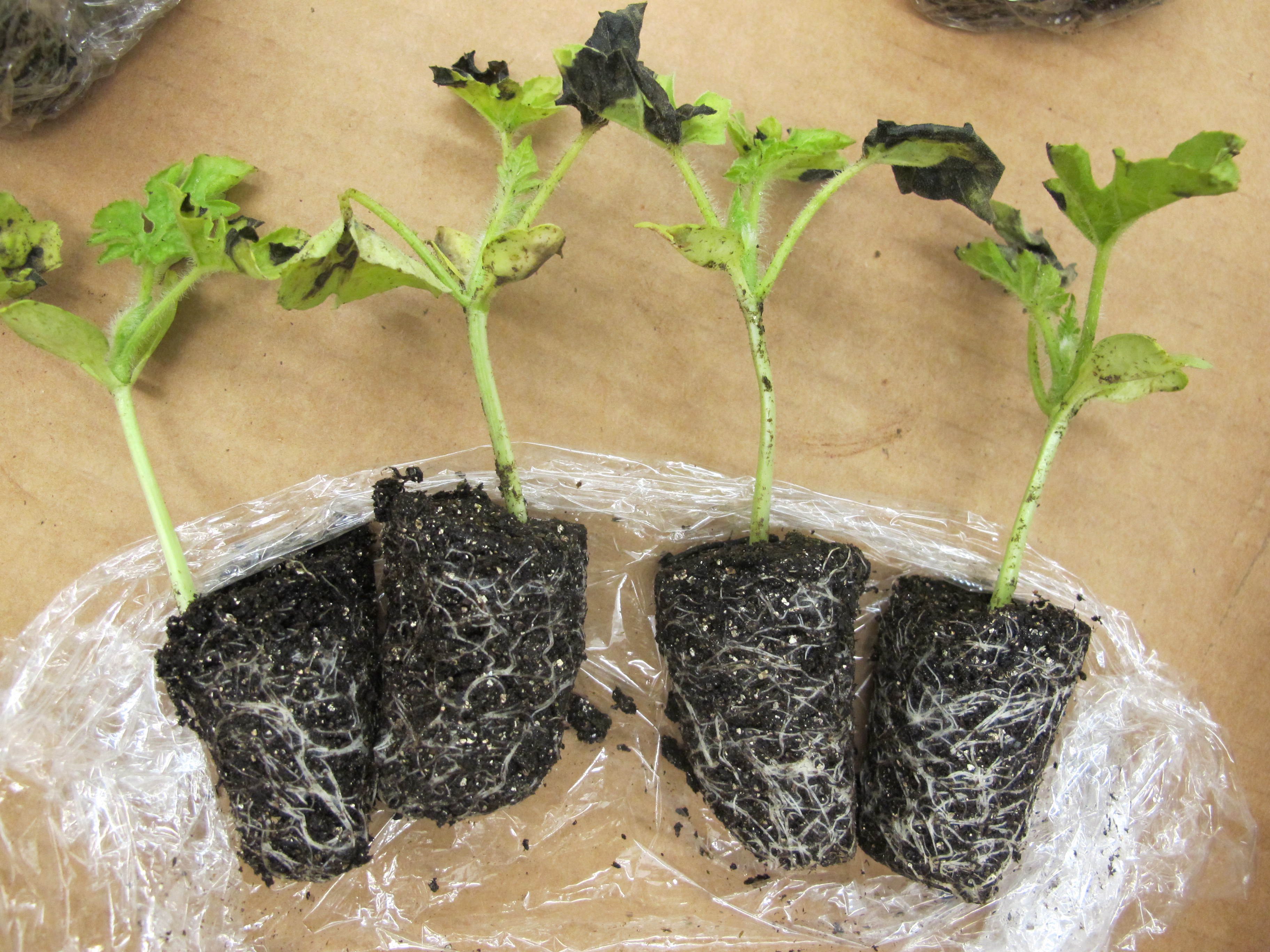Pseudomonas Leaf Spot Reported on Watermelon Transplants
go.ncsu.edu/readext?412718
en Español / em Português
El inglés es el idioma de control de esta página. En la medida en que haya algún conflicto entre la traducción al inglés y la traducción, el inglés prevalece.
Al hacer clic en el enlace de traducción se activa un servicio de traducción gratuito para convertir la página al español. Al igual que con cualquier traducción por Internet, la conversión no es sensible al contexto y puede que no traduzca el texto en su significado original. NC State Extension no garantiza la exactitud del texto traducido. Por favor, tenga en cuenta que algunas aplicaciones y/o servicios pueden no funcionar como se espera cuando se traducen.
Português
Inglês é o idioma de controle desta página. Na medida que haja algum conflito entre o texto original em Inglês e a tradução, o Inglês prevalece.
Ao clicar no link de tradução, um serviço gratuito de tradução será ativado para converter a página para o Português. Como em qualquer tradução pela internet, a conversão não é sensivel ao contexto e pode não ocorrer a tradução para o significado orginal. O serviço de Extensão da Carolina do Norte (NC State Extension) não garante a exatidão do texto traduzido. Por favor, observe que algumas funções ou serviços podem não funcionar como esperado após a tradução.
English
English is the controlling language of this page. To the extent there is any conflict between the English text and the translation, English controls.
Clicking on the translation link activates a free translation service to convert the page to Spanish. As with any Internet translation, the conversion is not context-sensitive and may not translate the text to its original meaning. NC State Extension does not guarantee the accuracy of the translated text. Please note that some applications and/or services may not function as expected when translated.
Collapse ▲In the past week we have seen a few cases of watermelon transplants with leaf spot symptoms (Fig. 1). Examination of samples at the NCSU Plant Disease and Insect Clinic has revealed that the culprit of the symptoms is a Pseudomonas spp. We have not seen a lot of this disease in North Carolina, but states such as Florida and Georgia have reported occurrences of Pseudomonas leaf spot in watermelon in past years.

Fig. 1: watermelon transplants infected with Pseudomonas leaf spot (Photo credit: NCSU Plant Disease and Insect Clinic)
Symptoms consist of leaf spots that appear dark, greasy and/or water soaked, and later become light tan in the center with a concentric ring patter in the lesion (Fig. 2). Lesions can occur in leaf margins, expand, and result in some defoliation (Fig. 3). Research indicates that cool, wet weather favors the disease, which explains why we are seeing some cases this spring. Work conducted in Florida also revealed that applications of copper and mancozeb every 7 days can delay disease symptoms until the weather becomes dry and warm. Buying certified seed and removing transplants with leaf spot symptoms are two ways to help reduce the amount of inoculum brought into the field. Rotating to a non-cucurbit crop in fields that had the pathogen and proper weed control are two additional ways to reduce the chances of repeat infections according to Florida researchers.

Fig. 2: watermelon transplants infected with Pseudomonas leaf spot. Note the leaf spots that appear dark and later become light tan in the center with a concentric ring patter in the lesion (Photo credit: NCSU Plant Disease and Insect Clinic).

Fig. 3: watermelon transplants infected with Pseudomonas leaf spot. Note the lesions in leaf margins that expand and later result in defoliation (Photo credit: NCSU Plant Disease and Insect Clinic).
If you think you have plants infected please contact your local Extension Agent and send photos and/or physical samples to the Plant Disease and Insect Clinic for confirmation. Observation of lesions under the microscope will reveal heavy bacterial streaming.


